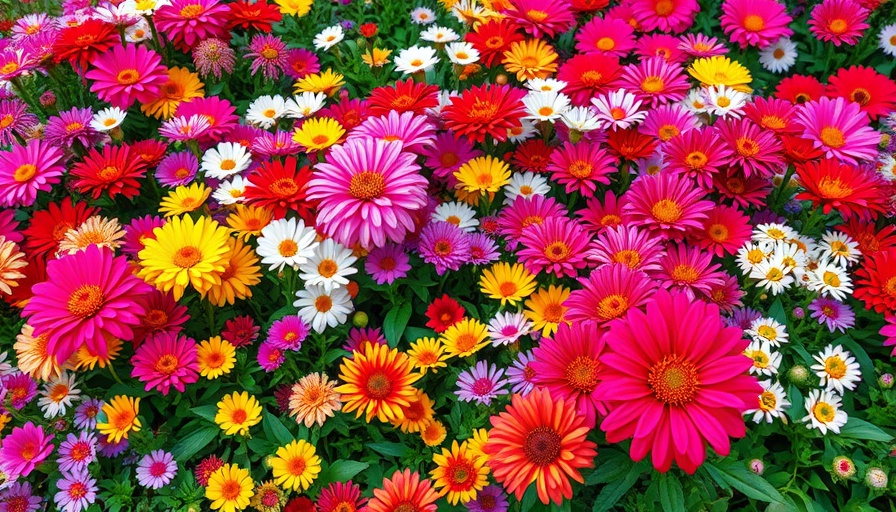
Transform Your Outdoors: Designing a Captivating Perennial Garden
Imagine a garden that bursts into color every spring, requires minimal upkeep, and brings life and cheer to your outdoor space year after year. A perennial garden offers just that, enticing every gardening enthusiast to embrace the beauty of these resilient plants. As you embark on this floral journey, there are important considerations and tips to help you design a garden that not only meets your aesthetic desires but also thrives in your specific environment.
Why Choose Perennials? The Beauty of Low-Maintenance Gardens
Perennials are the garden’s gift that keeps on giving. Unlike annuals that require replanting each year, these hardy plants return season after season, simplifying your garden management. This not only makes your life easier but also adds rich texture and varied blooms to your landscape. However, the beauty of a perennial garden lies in its thoughtful design—one that considers plant selection, growth patterns, and seasonal changes.
Get the Design on Paper: Planning Your Space
Before you dig into your garden, it’s crucial to sketch out your ideas. Use a garden journal to visualize your layout. Take into account sunlight, shade, and soil conditions, noting the specific needs of your desired plants. This process helps you foresee potential challenges and ensures optimal placement for your perennials, helping their colors to pop beautifully throughout the seasons.
Understanding Your Climate: Growing Zones Matter
Your local climate plays a pivotal role in which perennials will thrive. Research your hardiness zone to choose plants that will flourish in your area’s temperature range and moisture levels. This knowledge empowers you to make informed plant selections, steering clear of heartbreaking disappointments when a cherished plant fails to survive the winter.
Choosing the Right Plants: Diversity is Key
Diversifying your plant selection can enhance your garden’s resilience and beauty. Consider mixing herbaceous and woody plants to create depth and interest. Look for varieties that offer staggered bloom times, ensuring there is always something alive in your garden. Companion planting is another fun strategy—some plants thrive in each other’s company, providing mutual benefits such as pest control and enhanced growth.
Practical Insights: Preparing Soil and Planting
Healthy soil is the foundation of any thriving garden. Conduct a soil test to determine its nutrient levels and pH. Amend it as necessary to create the perfect balance for your perennials. When planting, ensure proper spacing to facilitate airflow and growth—overcrowded plants can lead to disease and reduced blooms. Also, pay close attention to watering needs; establishing a consistent irrigation schedule can be beneficial, especially in the initial growth stages.
Care and Maintenance: Keeping Your Garden in Shape
While perennials are generally low maintenance, they do require some care. Regularly check for pests and diseases. Control these early to prevent their spread. Seasonal tasks like deadheading spent flowers can enhance blooming and maintain your garden’s aesthetic appeal. Additionally, consider creating garden pathways for easy access while reducing soil compaction near your plants.
Embracing Sustainable Practices in Your Perennial Garden
As you cultivate your perennial garden, consider incorporating sustainable practices. Use organic fertilizers and mulching techniques to enrich your soil while maintaining moisture levels. Composting kitchen scraps and yard waste not only creates nutrient-rich soil but also reduces waste going to landfills. This environmentally-conscious approach enhances the gardening experience, making it feel rewarding on multiple levels.
Future Trends in Gardening: A Growing Movement
Gardening continues to evolve, with a rising trend toward sustainability and biodiversity. Committing to native plants not only supports local wildlife—such as bees, butterflies, and birds—but also reduces the need for irrigation and fertilizers. The integration of organic gardening practices is becoming increasingly popular, appealing to those looking to cultivate eco-friendly gardens.
Your Next Steps to a Flourishing Garden
With your newfound knowledge of designing a perennial garden, it’s time to put pen to paper and start planning. Enjoy the transformative journey of turning your outdoor spaces into vibrant havens—your green thumb is your greatest asset. Remember, gardening is not just about the flowers; it’s about creating a space that enhances your well-being and lifestyle.
 Add Row
Add Row  Add
Add 




Write A Comment